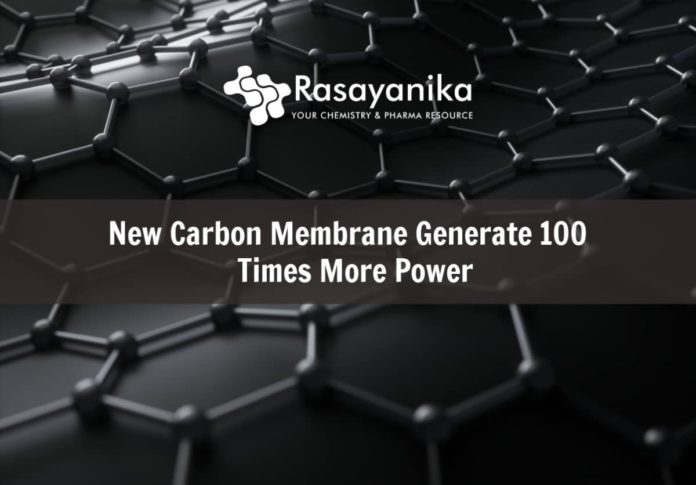New Thin And Porous Carbon Membrane Developed By Leiden Scientists
One molecule thick ultrathin membrane has been developed by Leiden chemists. Compared to membranes used to date, these membranes can produce a hundred times more power from seawater. Nature Nanotechnology published the results.
An exchange of salt and other particles takes place when fresh and saltwater meet. When particles move from one side to the other, a membrane kept in water can harness energy. The same process can be used to desalinate seawater. Leiden scientists developed a new membrane that can harness a hundred times the energy produced by prototype membranes and classic membranes.
The thickness of the membrane and how porous it influences the amount of energy generated. And scientists succeeded in creating a membrane that is both porous and thin using carbon. That is why their new membrane can generate more power compared to the conventional ones which are either porous or thin, but not both.
Grégory Schneider and Xue Liu spread a large number of oily molecules on a water surface to create this membrane. A thin film was formed from these molecular building blocks on their own. Molecules get locked in their place when heated, creating
a porous and stable membrane. The membrane can be used for different purposes, according to Xue Liu. The membrane is just 2nm thick and is permeable to potassium ions. Using a different molecular building block, the properties of the membrane can be changed. This way the membrane can be used for various purposes.The new membrane is a flat membrane made of carbon atoms, similar to graphene. But the membrane belongs to a completely different category, said Grégory Schneider. Many scientists start with graphene to develop membranes. They would be thin, but not porous. To make it permeable, they usually try to punch holes in the membrane.
But here, the scientists did the reverse by assembling small molecules to create a larger porous membrane. It contains imperfections compared to graphene, but that is what gives it its special properties.
This new discovery will open up new possibilities for desalination, power generation and for building efficient fuel cells.

















































